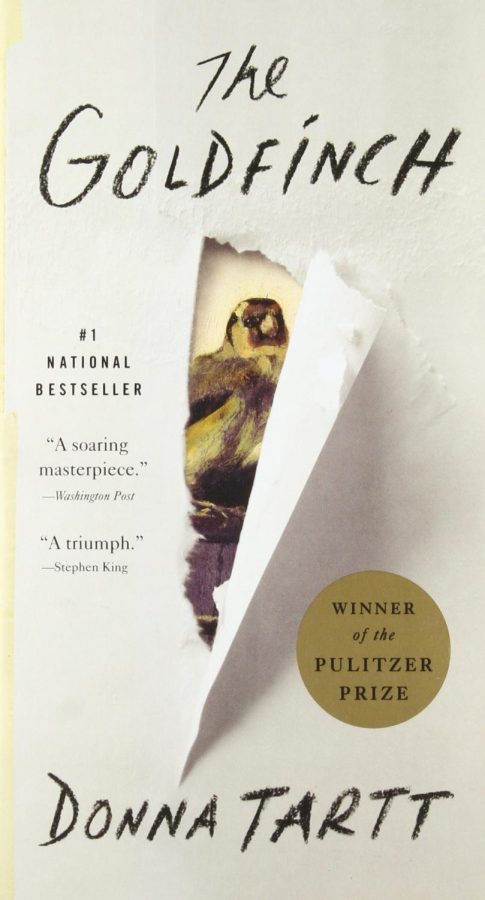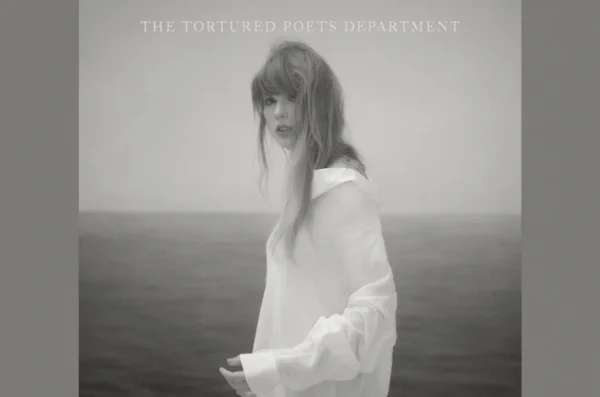The Goldfinch: A Phantasmagoria
April 29, 2021
The Goldfinch
A Phantasmagoria
By: Hudson Hsieh
For a while now I have been searching for a book in the genre of modern classics. Modern classics are books that are able to redefine their respective genre by exploring contemporary themes that aren’t touched upon in popular writing but with an updated writing style that is simple to read. I originally stumbled on the Goldfinch a few months ago while reading a list of must read books, and today I finally found a reason to read and analyze the Goldfinch. Throughout this article I will be trying my best to dissect the confusing plot, intricate characters, vivid writing, and finally hope to teach you all about some art. Get your snacks and charge your devices because this is the Goldfinch.
Spoiler free*- The Goldfinch is a crazy and wild roller coaster of a novel. There are multiple layers to this book, and each one is more crazy and wilder than the last. Throughout this book there will be multiple references to drugs, alcohol consumption, and many instances of crude language. Despite the book’s unassuming name, the goldfinch is an exploration of the human soul and mind of the darkest degree. It is jammed packed with information and the novel itself is very dense and long, so be prepared and I hope you enjoy the read.
Symbolism
When a writer writes a book, they have a purpose that compels them to write the story. Is the goal to teach people a lesson, entertain readers, or is it meant to be an allegory of society. The Goldfinch is able to do so much in seven hundred pages, it provides a captivating story, crafting beautifully written characters, and finally a thought provoking ending that makes the reader reflect on society.
Throughout the book Donna Tartt demonstrates to the reader the cruelty of the world, it’s tendency to corrupt a morally good person. She places big emphasis on how the events that led the main protagonist Theo Decker towards a path of debauchery was largely out of his control. Instead his behavior culminated after years and years of manipulation by those around him.
In the last chapter, the reader can see Theo writing in the second person as he breaks the “fourth wall”. In the chapter he directly addresses the reader and gives insights on his life, and how different people affected how his life turned out for better or worse. This chapter in my opinion is one of the most important chapters in the book because Theo reflects on the last 8-10 years of his life. He contemplates the painting of the Goldfinch, and the role that it played in his life. The painting soon defines who Theo is because as he grows older he comes to lose everything else that defines him from his dignity, innocence, and finally his morality.
The Goldfinch has a bonanza of symbolism in it, almost every unique object that we see can hold a deeper meaning. The most essential one in my opinion to understanding this book is the drugs. Pretty much from the beginning of the book there is a reference of a cigarette, and from here on out it gets worse and worse as Theo becomes a boy who is a goody two shoes to a full blown drug addict and junkie at the end. To me the drugs in the book symbolize everyone around Theo. Constantly trying to turn him into what they want, forcing him to change and become a different person. The times where Theo takes his drugs, the book does not glorify it, it shows it in a depressing manner as if Theo is literally forcing himself to take it. The drugs are his way to accept who he has become, and a way of self reconciliation.
The drugs also serve as an escape for Theo, from the harsh reality of the world. From the beginning of the book, Theo tells us that no one loved him the way his mother truly loved him. That her death was a turning point in his life, to going down a darker path. The drugs as a way to cover up the pain of losing her, and finally as a source of escape.
The drug itself also changes as a symbol. In one of the most creative and innovative writing I ever seen, with the drugs themselves transitioning in meaning from the beginning to the end. They serve as an escape for Theo at the beginning, to become a literal defining feature of who he is later on in the book. Just as Theo is able to change throughout the course of the book, the drugs play a different role in his life depending on his age.
The second clear symbol is Pippa or Theo’s love interest. The masterful way Donna Tartt describes Pippa is unmatched, to quote the novella “This girl had bright red hair, her movements were swift, her face sharp and mischievous and strange, and her eyes were an odd color, a golden honeybee brown. And though she was too thin, all elbows, and in a way almost plain, yet there was something about her that made my stomach go watery.”(p.75 Tartt) This quote at the beginning of the book is the start of Theo’s crazy obsession with Pippa. For the rest of the book, Theo tries his best to get Pippa to become his girlfriend, and he continuously fails. This obsession is what ruins his social life, and shapes how he perceives people in the future.
He even states at the end of the book that Pippa represents the beauty inside him. That she is the exact opposite of him, because although she was in the same terrible accident as him, she finds a way to turn her life around and becomes a good person at the end. Truly exemplifying the term, opposites attract.
Setting
Analyzing the setting is an integral step in understanding the deeper message behind a novel. A good writer will use setting to their advantage by creating a world that reflects the themes and message of the novel. Oftentimes the setting can have a huge impact on the character’s personality and behavior. For example a creepy Victorian mansion can set an ominous tone, and make the reader feel unease. The power of setting in a story is only limited by the author’s imagination.
Donna Tartt thoroughly enjoys writing about the grimy parts of New York and Las Vegas. She does a fantastic job of bringing out the bad parts of these cities, creating a sense of suspense and tension. Her vivid and uncut writing compliments the setting as she perfectly describes the mood, feel, and sense of these cities in fluid fashion.
In Las Vegas, the main setting is not one you would expect. The story doesn’t take place in the main upscale area of Las Vegas, but instead the desert suburbs that surround the city. The way Donna Tartt describes the location of the desert suburbs are visceral and raw. The house and surrounding area where Theo lives makes the reader feel uncomfortable as it’s eerie emptiness puts an emphasis on the loneliness that Theo feels after his mom passes away. To quote the book “But when my eyes adjusted from the bright sun, I was taken aback by how bare it was. Bone-white walls. Stone fireplace, with sort of a fake hunting-lodge feel. Sofa like something from a hospital waiting room. Across from the glass patio door stretched a wall of built-in shelves, mostly empty.”(Tartt, 224)
One of the most powerful dynamics that isn’t acknowledged enough is between Theo and his father. In the beginning of the book we can see how much contempt that Theo holds for his father. However in Las Vegas we can see the wall that separates Theo from his father starts to dissolve. The more he tries to distance himself away from his father, ironically the more Theo starts to become him.
At the middle of the book, where we see Theo as an adult, we can see that he starts to exhibit the behaviors that resemble his father. Other than the superficial ones like alcohol consumption, drug use, and reckless consumerism. We as readers are able to analyze who Theo has become, a lost and desperate person that is trying his best to survive in an unforgiving world.
He even specifies this in the ending where he states “Why do I only care about the wrong things, and care nothing at all for the right ones? Or, to tip it another way: how can I see so clearly that everything I love or care about is illusion, and yet—for me, anyway– all that’s worth living for lies in that charm? This quote demonstrates that, throughout his whole life Theo has tried his best to fit in, but deep down he knows that his values are different from those of other people, and that scares him.
I think the quote above is one of the best in the book, because it’s able to convey so much information in a single subtle phrase. The question that this novel tries to answer throughout is to find out where in life did Theo “go wrong”. This quote gives insight, because it reveals that without a source of real love or someone in the world that truly cares about him, Theo starts to lose pieces of himself and that’s when he starts to grasp at shadows and engage in activities that ultimately destroy him.
Lastly, New York City is a completely different city in the book. Other than the beginning of the book, the Goldfinch does little to mention any of the popular tourist attractions. It really flips the dynamic of what it means for a book to take place in such a popular city.
Characters
All the characters in the Goldfinch reflect Theo’s personality, whether that may be his charisma, guilt, or recklessness. The book strategically centers on Theo, with all the plot, settings, and symbols both reflecting who he is and who he will become. The best example of that tenet is how Donna Tarrt writes her characters to perfectly fit the crazy world of the Goldfinch.
To start off, Boris the secondary protagonist is one of the most chaotic characters you’ll ever meet. When the reader meets him, he is a teenage alcoholic that has traveled the world and seen most of the horrors that plague planet earth. This is evident because Boris has built up a huge library of memory and experience that he tells Theo when they are at his house. At the start of the book Boris exhibits the personality traits of being impulsive, compassionate, and generous. This is shown when Boris offers many times that Theo stays at his own house when Theo’s father would disappear for days on end. He also signifies Theo loss of innocence, because Theo stops caring about his life after being around Boris. He soon becomes numb to things like drugs and alcohol consumption because of Boris
Another character that is essential to the book is Hobbie, the role he plays is the archetypal mentor. At the start of the book, it is Hobbie that teaches Theo about art and is the one to introduce him to the complex world of art dealership. He also provided Theo with a sense of belonging that he never had with the Barbours and this led Theo to trust Hobbie more than anyone else.
The interesting part of their relationship is how different it becomes later in the book. It’s at the midpoint of the novella where the dynamic between the two changes, with Theo taking the dominant role in their relationship. Coincidently this is also the point in Theo’s life where he starts making decisions for himself, because for so long his life has been controlled and manipulated by everyone around him. This is an interesting fact because it’s when Theo starts to take control of his life that many of his relationships really start to develop and mature.
This point is really driven home at the end of the book when Hobbie finds out that Theo had been forging and selling art in order to make money. The carefully placed house of cards that Theo puts up, comes crashing down in an instant. Throughout the whole book Hobbie tries so hard to mold Theo into his idea of what a person should be, but his pressure ends up pushing Theo away from him. Instead the pressure that Hobbie places on Theo pushes him down a darker path.
Lastly we have to examine the most important character, the main protagonist Theo. Theo and the Goldfinch have the most intriguing relationship in the novella because they symbolize each other.
The painting of the Goldfinch to me represents a tiny bird in the face of an overwhelming and ever changing world. It wants to cling to the past, but the current of time pulls it along, so it has to endure the painful journey.
The painting itself holds two different meanings, one for Theo and one for the reader. To the reader, the painting is a beautiful display of a delicate creature. It may look a bit strange as such a beautiful bird should belong in nature, not in the mundane background of a mailbox. If an observer would look closely enough, they could see an abstract chain. This chain is used to represent a beautiful creature being tied down to the world that it wasn’t built for.
For Theo the painting represents his grief for his mother, and simultaneously his eternally burning love for Pippa. He is trapped in the past, unable to adapt to his constantly changing landscape. So he holds on to the only thing from his past, a painting from the day his mother died. The painting also represents Theo’s affinity for beautiful objects and artifacts. In the reflection chapter at the end, we come to know that the only thing that Theo still holds value for are paintings and sculptures. “And I add my own love to the history of people who have loved beautiful thing, and looked out for them, and pulled them from the fire, and sought them when they were lost, and tried to preserve them and save them while passing them along literally from hand to hand, singing out brilliantly from the wreck of time to the next generation of lovers, and the next.”(Tartt, 771)
The Philosophy of the Goldfinch
The ultimate message that the Goldfinch is trying to convey is how easily an innocent creature is able to be corrupted. It’s a social allegory about the effect of having your life constantly dictated by those around you.
The book is also about dealing with one’s past, “Over the next year, I was so preoccupied in trying to block New York and my old life out of my mind that I hardly noticed the time passing. Days ran changelessly in the seasonally glare: hungover mornings on the school bus and our backs raw and pink from falling asleep by the pool,”(Tartt, 291) This quote demonstrates by trying so hard to forget his past, Theo ultimately becomes a new person entirely. Donna Tartt is also trying to teach the reader that in order to move forward, you have to let go of the past and don’t dwell on what happened too much.
Conclusion
I gained a new perspective of life from this book. It shows me how important it is to surround yourself with people that genuinely want to make you a better person. The book also exposes the dangers of being around people who are involved with illicit substances; and I’m glad that this book is able to portray that perfectly. I highly recommend The Goldfinch for anyone that is interested in reading a unique realistic fiction, filled to the brim with life advice and powerful themes. That is why the Goldfinch is so brilliant.
Thanks for reading and have a nice day.
-Hudson
Please support Donna Tartt by reading the Goldfinch
Links:
Expand your vocabulary: https://www.thesaurus.com
A basic summary of the Goldfinch: https://en.wikipedia.org










